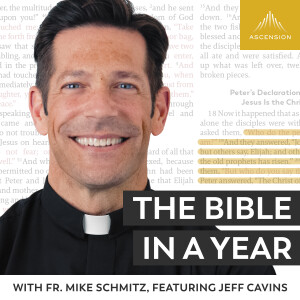

G’day! Welcome to Partakers and to our Easter 2020 series, God is Love, where for the next 30 days we look at Jesus Christ, the events of Easter and its consequences.
21 When all the people were being baptised, Jesus was baptised too. And as he was praying, heaven was opened 22 and the Holy Spirit descended on him in bodily form like a dove. And a voice came from heaven: ‘You are my Son, whom I love; with you I am well pleased.’
23 Now Jesus himself was about thirty years old when he began his ministry. He was the son, so it was thought, of Joseph. Luke 3v21-23
Jesus’ baptism, shows the commencement of Jesus’ public ministry. Jesus is now about 30 years old. John the Baptist precedes all Gospel accounts of the start of Jesus’ ministry, and this is because repentance before God is the key to starting a new life in God’s Kingdom.
Witness 1 – John the BaptistWhen John came (Luke 3v1-2) – When John the Baptist appeared on the scene, no prophetic voice had been heard within Israel for almost 400 years. His coming was part of God’s perfect timing, for everything that relates to God’s Son is always on time (Gal.4v4; Jn.2v4, 13v1)
How John came (Luke 3v3) – Dressed and acting like the Old Testament prophet Elijah, John came to the area near the River Jordan, preaching and baptizing. He announced the arrival of the kingdom of heaven (Mt.3v3) and urged the people to repent. John’s baptism looked forward to the coming of the Messiah, while Christian baptism looks back to the finished work of Christ in His death and resurrection.
Why John came (Luke 3v4-20) – John the Baptist was a voice “crying in the wilderness” (Is.40v1-5; Luke 3v4; Jn.1v23). Spiritually speaking, the nation of Israel was living in a state of unbelief and twisted spiritual reality. The people desperately needed to hear a voice from God, and John was that faithful voice. It was John’s work to prepare the nation for the Messiah and then present the Messiah to them. John is compared to an axeman cutting down trees that down bear fruit (Luke 3v9) or a farmer who burns useless chaff (Luke 3v17). Many Jews of the time thought they were destined for heaven simply because they were descended from Abraham. In Luke 3v7, John depicts the crowds as snakes.
John the Baptist also was a teacher. He taught people to live their new faith (Luke 3v10-14). He told them not to be selfish, but to share their blessings with other people. Tax collectors were told by John to do their work honestly. Soldiers were to stop using their jobs for personal gain. John clearly stated that Jesus was “the Lord” (Luke 3v4) and the Son of God (Jn.1v34)
Jesus comes to John the Baptist, and presents himself for baptism. John at first refuses to do it (Mt.3v13-15). He knew that Jesus of Nazareth was the perfect Son of God who had no need to repent of sin.
Through his baptism, he identified with all sinners that he came to save. We have seen already that it is the start of his public ministry (Acts 1v21-22, 10v37-38). But why did Jesus get baptized? In replying to John’s initial refusal to baptize him, Jesus said “…it is proper for us to do this to fulfil all righteousness” (Mt.3v15). This looks forward to the cross, because it is only through the baptism of suffering that Jesus endured on the cross, that God is able to fulfil all righteousness. The “us” referred to means Father, Son and Spirit. When Jesus came up from the water, the Father spoke from heaven and identified Him as the beloved Son of God, and the Spirit visibly came upon Jesus in the form of a dove.
The genealogy here reminds us that the Son of God was also the Son of Man, born into the world, identifying with the needs and problems of mankind. Through the genealogy, we see down through the generations Jesus’ link to Adam and ultimately God. The phrase “the son of” generally means any remotely connected descendant or ancestor. It is a reminder that Jesus, being Joseph’s legal son was part of a human family, tribe, race and nation. Jesus’ line goes back through the Old Testament from Joseph to King David to Judah, Jacob, Isaac and Abraham, to Methuselah to Noah and Adam. The genealogy, with its link to David, shows Jesus’ right to ascend to David’s throne (Luke 1v32-33). The genealogy shows Jesus’ total human-ness, and because he is linked to Adam, identifies with all humanity and not just Israel. But there is one difference between Jesus and all other humans. In that Luke doesn’t stop the genealogy at Adam, as he would have for all other humans, Luke ultimately leads and links Jesus to being God’s Son.
Jesus as the Son of God (Luke 3v38)Adam had come into the world bearing the true image of a son of God, but, when Adam disobeyed God, that image was marred and scarred due to sin entering the world. All that is, except Jesus. The voice from God the Father ratified Jesus as the Son of God. Not a son of God as some may claim, but the one and only Son of God. This genealogy points to the unbroken relationship between Jesus and God. Jesus is as Adam was before Adam’s disobedience.
Click or Tap here to listen to or save this as an audio mp3 file
Click or tap on the appropriate link below to subscribe, share or download our iPhone App!
More Episodes
All Episodes>>You may also like
Create Your Podcast In Minutes
- Full-featured podcast site
- Unlimited storage and bandwidth
- Comprehensive podcast stats
- Distribute to Apple Podcasts, Spotify, and more
- Make money with your podcast












